
The Lakota are a Native American people. Also known as the Teton Sioux, they are one of the three prominent subcultures of the Sioux people, with the Eastern Dakota (Santee) and Western Dakota (Wičhíyena). Their current lands are in North and South Dakota. They speak Lakȟótiyapi—the Lakota language, the westernmost of three closely related languages that belong to the Siouan language family.

The Sioux or Oceti Sakowin are groups of Native American tribes and First Nations peoples from the Great Plains of North America. The Sioux have two major linguistic divisions: the Dakota and Lakota peoples. Collectively, they are the Očhéthi Šakówiŋ, or "Seven Council Fires". The term "Sioux", an exonym from a French transcription ("Nadouessioux") of the Ojibwe term "Nadowessi", can refer to any ethnic group within the Great Sioux Nation or to any of the nation's many language dialects.
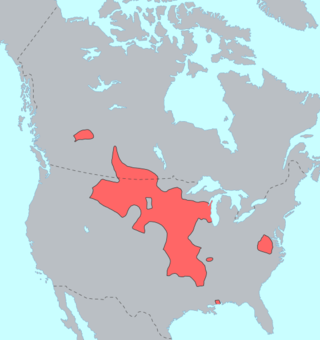
The Western Siouan languages, also called Siouan proper or simply Siouan, are a large language family native to North America. They are closely related to the Catawban languages, sometimes called Eastern Siouan, and together with them constitute the Siouan (Siouan–Catawban) language family.

Plains Indians or Indigenous peoples of the Great Plains and Canadian Prairies are the Native American tribes and First Nation band governments who have historically lived on the Interior Plains of North America. While hunting-farming cultures have lived on the Great Plains for centuries prior to European contact, the region is known for the horse cultures that flourished from the 17th century through the late 19th century. Their historic nomadism and armed resistance to domination by the government and military forces of Canada and the United States have made the Plains Indian culture groups an archetype in literature and art for Native Americans everywhere.
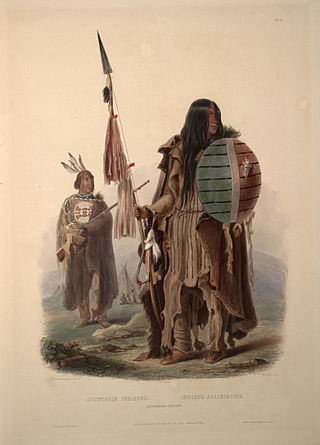
The Assiniboine or Assiniboin people, also known as the Hohe and known by the endonym Nakota, are a First Nations/Native American people originally from the Northern Great Plains of North America.
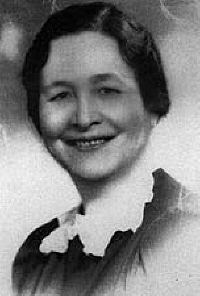
Ella Cara Deloria, also called Aŋpétu Wašté Wiŋ, was a Yankton Dakota (Sioux) educator, anthropologist, ethnographer, linguist, and novelist. She recorded Native American oral history and contributed to the study of Native American languages. According to Cotera (2008), Deloria was "a pre-eminent expert on Dakota/Lakota/Nakota cultural religious, and linguistic practices." In the 1940s, Deloria wrote a novel titled Waterlily, which was published in 1988, and republished in 2009.
The Dakota language, also referred to as Dakhóta, is a Siouan language spoken by the Dakota people of the Očhéthi Šakówiŋ, commonly known in English as the Sioux. Dakota is closely related to and mutually intelligible with the Lakota language. It is critically endangered, with only around 290 fluent speakers left out of an ethnic population of almost 250,000.
Sioux is a Siouan language spoken by over 30,000 Sioux in the United States and Canada, making it the fifth most spoken Indigenous language in the United States or Canada, behind Navajo, Cree, Inuit languages, and Ojibwe.

The Battle of Big Mound was a United States Army victory in July 1863 over the Santee Sioux Indians allied with some Yankton, Yanktonai and Teton Sioux in Dakota Territory.

The Battle of Dead Buffalo Lake was a skirmish in July 1863 in Dakota Territory between United States army forces and Santee, Yankton, Yanktonai and Teton Sioux. The Sioux attempted to capture the pack train of the army and retired from the field when they were unsuccessful.
The Mdewakanton or Mdewakantonwan are one of the sub-tribes of the Isanti (Santee) Dakota (Sioux). Their historic home is Mille Lacs Lake in central Minnesota. Together with the Wahpekute, they form the so-called Upper Council of the Dakota or Santee Sioux. Today their descendants are members of federally recognized tribes in Minnesota, South Dakota and Nebraska of the United States, and First Nations in Manitoba, Canada.

The Crow Creek Indian Reservation, home to Crow Creek Sioux Tribe is located in parts of Buffalo, Hughes, and Hyde counties on the east bank of the Missouri River in central South Dakota in the United States. It has a land area of 421.658 square miles (1,092.09 km2) and a 2000 census population of 2,225 persons. The major town and capital of the federally recognized Crow Creek Sioux Tribe is Fort Thompson.
The Assiniboine language is a Nakotan Siouan language of the Northern Plains. The name Assiniboine comes from the term Asiniibwaan, from Ojibwe, meaning 'Stone Siouans'. The reason they were called this was that Assiniboine people used heated stone to boil their food. In Canada, Assiniboine people are known as Stoney Indians, while they called themselves Nakota or Nakoda, meaning 'allies'.
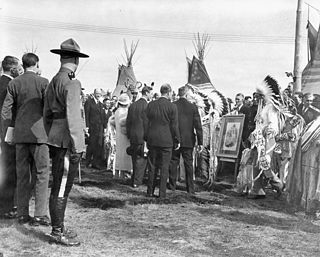
The Nakoda are an Indigenous people in Western Canada and the United States.
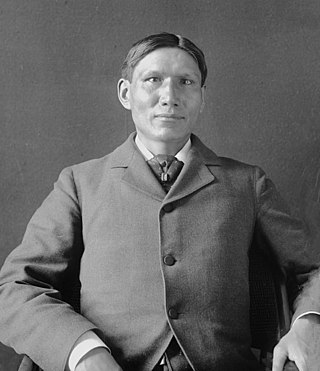
The Dakota are a Native American tribe and First Nations band government in North America. They compose two of the three main subcultures of the Sioux people, and are typically divided into the Eastern Dakota and the Western Dakota.
The Alexis Nakota Sioux Nation no. 437 is a Nakoda First Nation which reserves near Edmonton, Hinton, and Whitecourt, in the Canadian province of Alberta, and headquartered at 54° N and 114°, about 85 kilometres (53 mi) west of Edmonton. The Alexis Nakota Sioux Nation is a member of Treaty 6.

The history of South Dakota describes the history of the U.S. state of South Dakota over the course of several millennia, from its first inhabitants to the recent issues facing the state.

The Yankton Sioux Tribe of South Dakota is a federally recognized tribe of Yankton Western Dakota people, located in South Dakota. Their Dakota name is Ihaƞktoƞwaƞ Dakota Oyate, meaning "People of the End Village" which comes from the period when the tribe lived at the end of Spirit Lake just north of Mille Lacs Lake. The CNWRR records state the name is alternately spelled with an "E" instead of an "I" or "Ehanktowan".

Stoney—also called Nakota, Nakoda, Isga, and formerly Alberta Assiniboine—is a member of the Dakota subgroup of the Mississippi Valley grouping of the Siouan languages. The Dakotan languages constitute a dialect continuum consisting of Santee-Sisseton (Dakota), Yankton-Yanktonai (Dakota), Teton (Lakota), Assiniboine, and Stoney.
The Pheasant Rump Nakota First Nation is a First Nation in the Canadian province of Saskatchewan, who reside on the Pheasant Rump Nakota 68 reserve near Kisbey. This band government contains three nations, which are Nakoda.